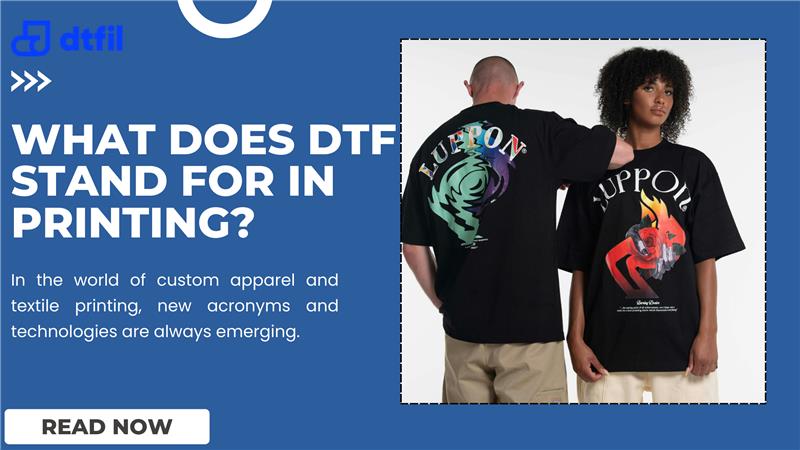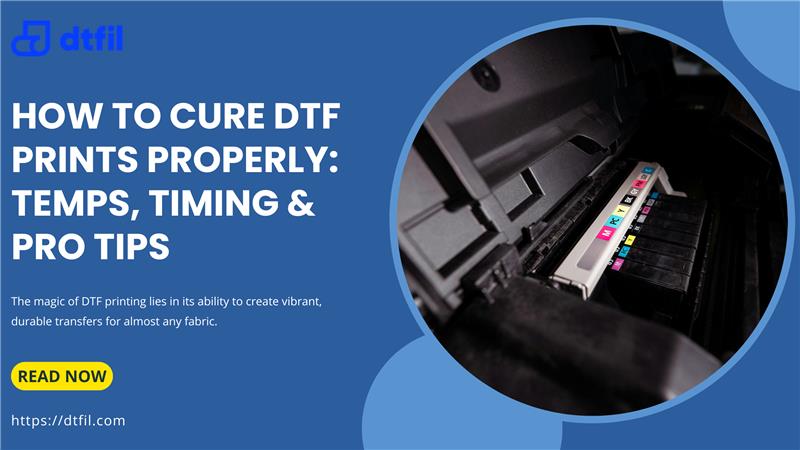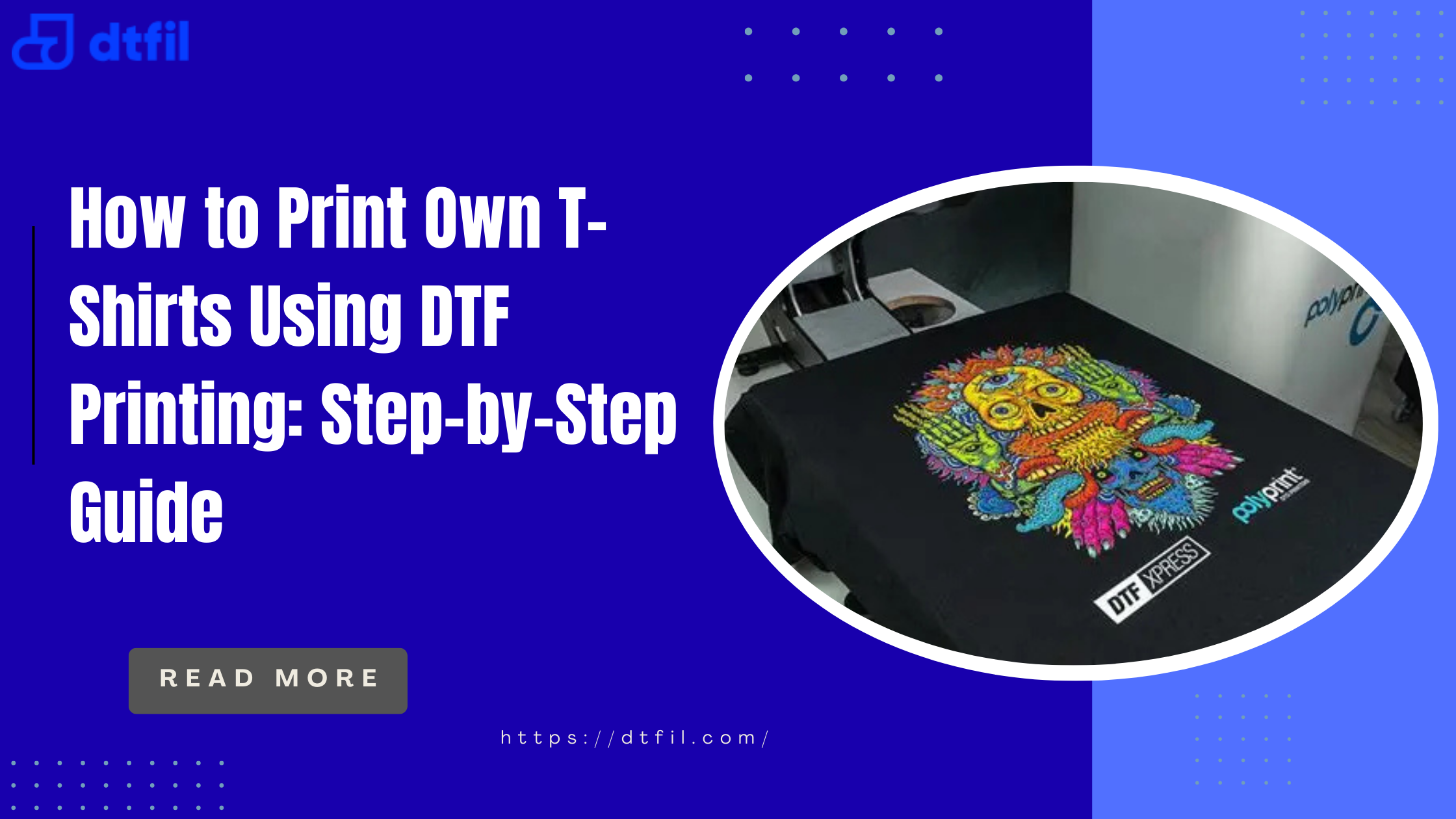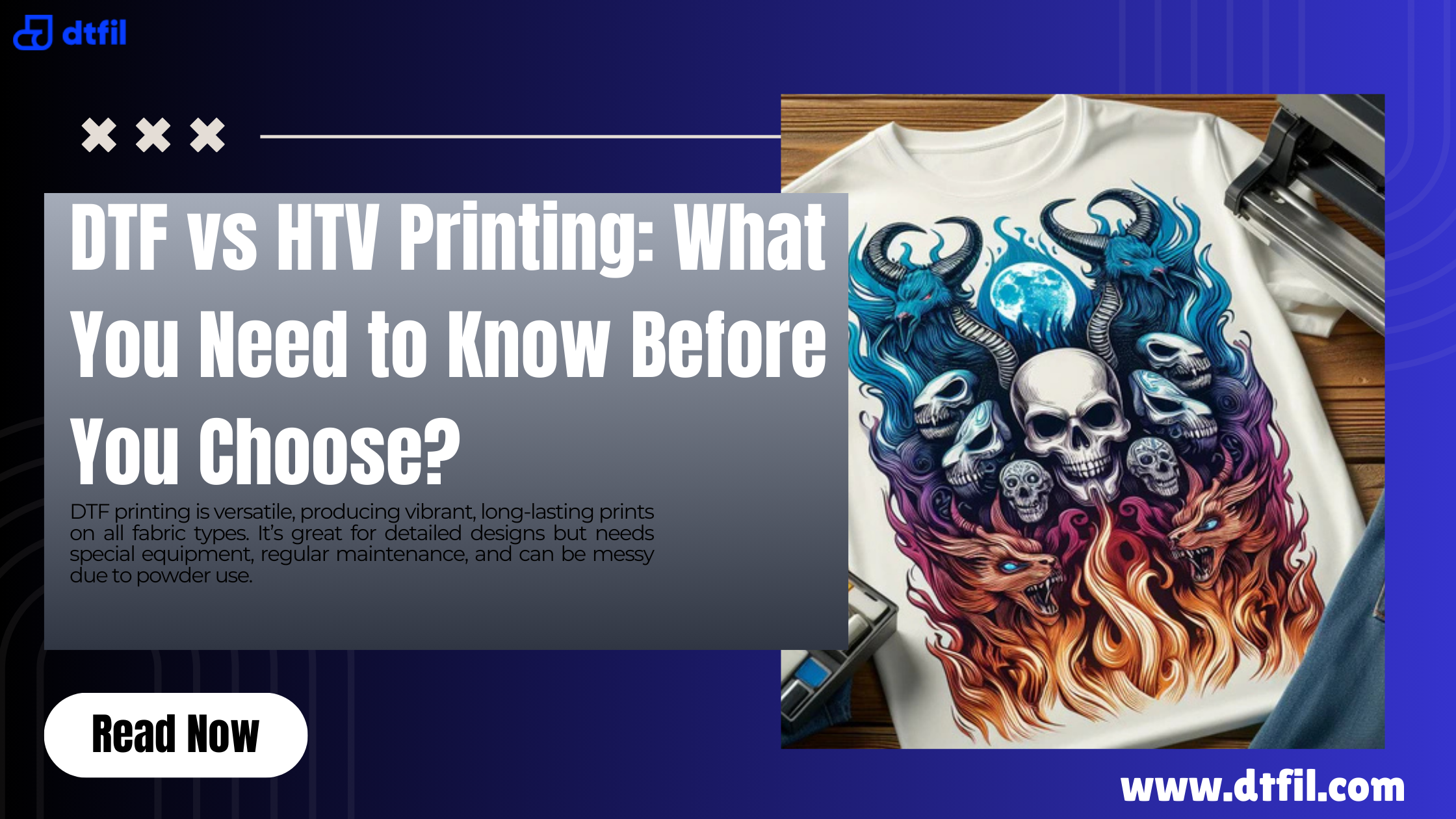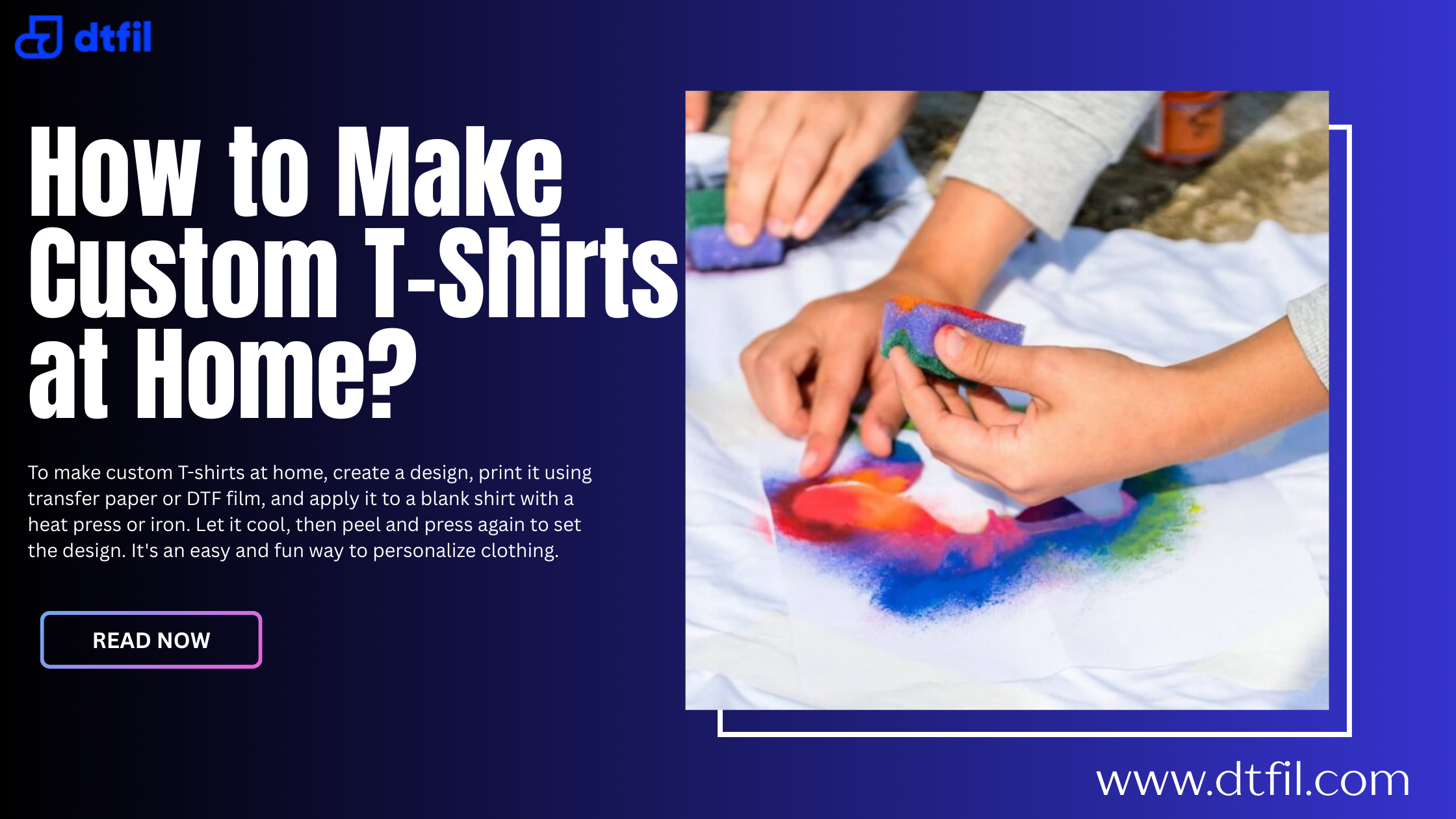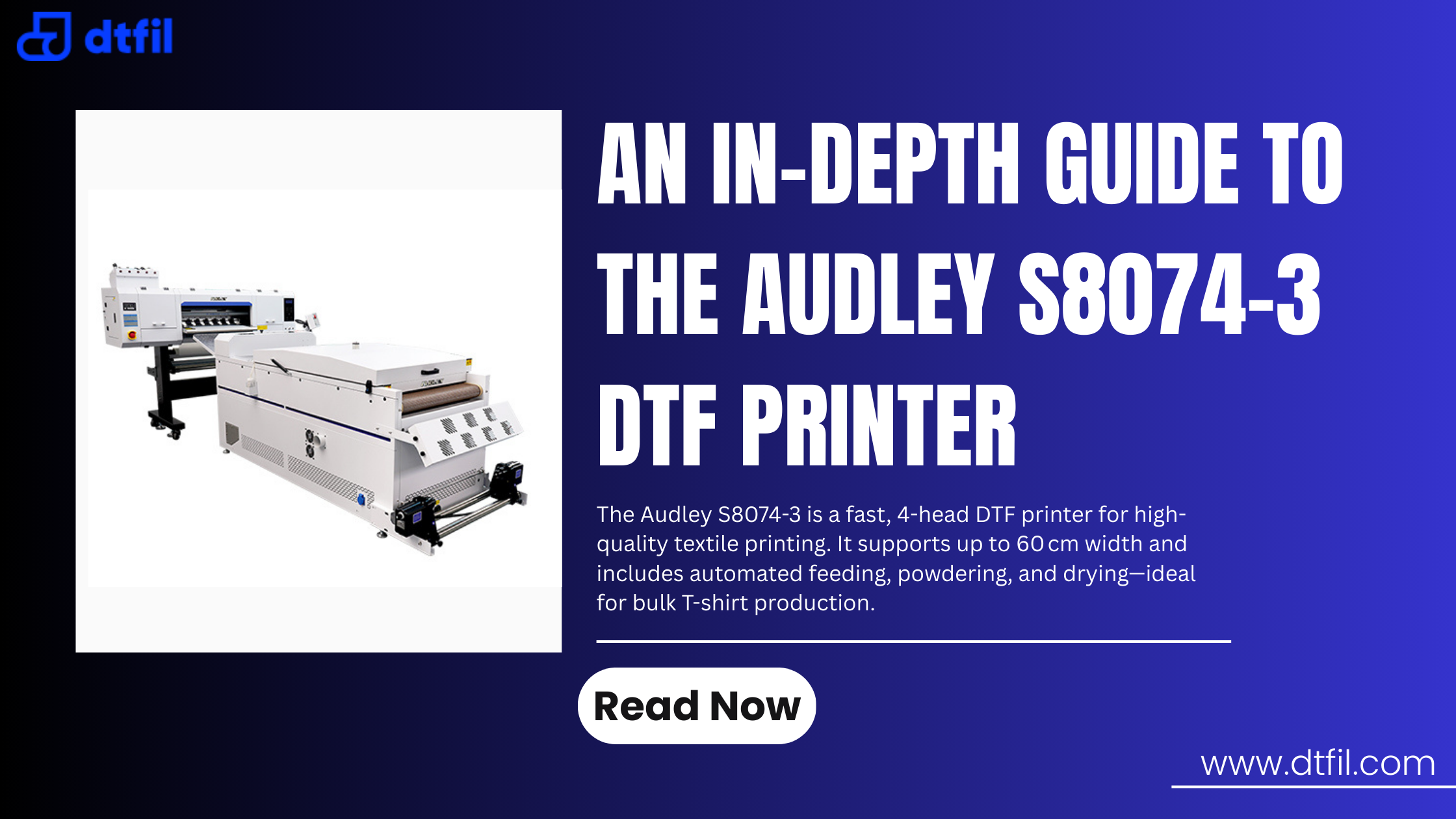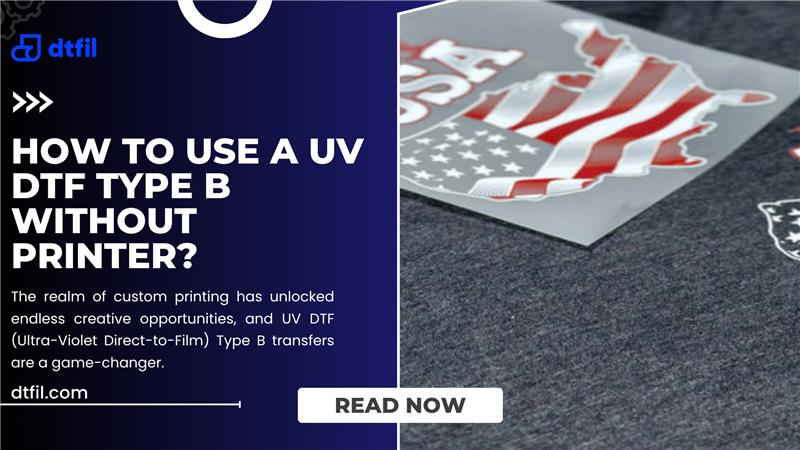Many different methods are competing for attention in the field of textile printing, each having special benefits and drawbacks. Because it produces high-quality outcomes, Direct-to-Film printing, or DTF printing, has become a potential way to realize a lot of concepts and designs. Direct-to-Film (DTF) printing has recently emerged as a promising technique, gaining popularity for its versatility and efficiency.
In this blog, we'll explore the direct to film printing pros and cons, provide insights on how to print DTF transfers, and discuss the distinctive features of this method compared to others.
The information here can help you make the best decisions for yourself if you're considering entering the DTF printing industry or just getting your ideas printed.
What is Direct-to-Film (DTF) Printing?
A digital printing method called "Direct-to-Film" (DTF) transfers graphics straight onto a specific type of film. After that, pressure and heat are used to transfer this film onto the fabric. DTF printing is a flexible option for bespoke printing since it can print on a variety of fabrics, including cotton, polyester, and mixes, unlike other techniques like Direct-to-Garment (DTG) or screen printing.
Also Read: DTF Heat Press Safety: Essential Guidelines & Tips
The Pros of DTF Printing
1. Versatility in Material Compatibility
One of the standouts of DTF printing benefits is its ability to print on a wide range of materials. DTF printers are capable of handling a wide range of substrates, including non-textile materials, blends, cotton, and polyester. Because of its adaptability, it's a desirable choice for companies who sell a wide range of goods.
2. High-Quality Prints
DTF printing produces vibrant and detailed prints that maintain their quality over time. The use of high-resolution images and precise ink application ensures that the final product is both eye-catching and durable. This makes it a great option for intricately detailed and multicolored artwork.
3. Cost-Effective for Small Runs
DTF printing is less expensive for small to medium-sized print runs than screen printing or other conventional techniques. It is the best option for custom DTF transfers and personalized items because it doesn't require expensive setup procedures.
4. Easy to Learn and Use
The process of how to print DTF transfers is straightforward and user-friendly. With the right equipment and a bit of training, even beginners can achieve professional-quality results. This accessibility makes it a popular choice for startups and small businesses.

The Cons of DTF Printing
1. Initial Investment Costs
While the ongoing costs of DTF printing are relatively low, the initial investment in a DTF direct to film printer can be significant. Some small firms may find it prohibitive to purchase expensive high-quality printers and the required accessories.
Also Read: How to Choose the Best DTF Transfer Film?
2. Maintenance Requirements
For DTF printers to operate at their best, frequent maintenance is necessary. This involves doing routine checks and cleaning print heads, both of which might take time. Reduced print quality and clogged nozzles are two problems that can arise from neglecting maintenance.
3. Environmental Considerations
The use of specialized films and inks in DTF printing raises some environmental concerns. Not all of these products can be recycled, and incorrect disposal can add to trash in the environment. Businesses need to consider eco-friendly practices and waste management solutions.
How to Print DTF Transfers Correctly
Printing DTF transfers involves a few critical steps to ensure high-quality results. Here’s a simplified guide:
- Get the design ready: Software for graphic design can be used to develop or modify designs. Make sure it prints well and has a great resolution.
- Print on the Film: Insert your DTF printer with the designated DTF film. Using the printer and ink settings that are right for you, print the design onto the film.
- Apply Powder Adhesive: Spray the printed film with powder adhesive right away after printing. This facilitates the transfer process by helping the design stick to the fabric.
- Cure the Adhesive: To cure the adhesive powder, either put the film in a curing oven or use a heat press. This step is essential to guarantee the print's longevity.
- Transfer to Fabric: To transfer the design to the fabric, place the film on it and heat press. As directed by the manufacturer, apply pressure and heat.
- Peel the Film: After the transfer is finished, let the cloth cool a little bit before removing the film. At this point, the fabric should be permanently covered with your design.
Also Read: Guide to Print DTF Transfers for the Best Results
Why Choose DTFIL for DTF Prints?
DTF IL is a dependable option for DTF printing, providing many advantages:
- Best quality assurance and durable prints: After several uses, the quality is still excellent.
- Quick Results: We provide your products quickly without sacrificing their quality.
- Proficiency in managing a variety of substrates: DTF IL provides a wealth of experience, especially when it comes to handling a variety of substrates. Whether it's glass, leather, or fabric, the DTF IL team has the know-how to ensure that your prints turn out flawlessly.
For customized printing, Direct-to-Film (DTF) printing is a flexible and effective technique that has many advantages. From its ability to print on various materials to producing high-quality, durable designs, DTF printing stands out as a valuable technique in the textile industry. However, it's essential to weigh the pros and cons, consider the initial investment, and ensure proper maintenance to make the most of this technology.
Ready to raise your printing game with Direct-to-Film (DTF) printing? Visit DTFIL today to explore our top-notch DTF printers and supplies!
FAQs:
1- What are the main benefits of Direct-to-Film (DTF) printing?
The main benefits of DTF printing include its versatility in material compatibility, high-quality prints, cost-effectiveness for small runs, and ease of use. It enables the creation of vivid and long-lasting designs on a range of materials and textiles.
2- What are some drawbacks of using DTF printing?
Drawbacks include the initial investment costs for high-quality DTF printers, regular maintenance requirements, and environmental considerations due to the use of specialized films and inks.
3- How do I print DTF transfers correctly?
To print DTF transfers correctly, you need to prepare the design, print it on special film, apply a powder adhesive, cure the adhesive, transfer the design to fabric using a heat press, and then peel the film. Each step requires attention to detail to ensure the best results.
4- What is Direct-to-Film (DTF) printing and how does it differ from other printing methods?
Using heat and pressure, designs are printed onto a specific film in the process of direct-to-film (DTF) printing, which then transfers the film to fabric. It is more affordable for small runs and offers better material compatibility than techniques like Direct-to-Garment (DTG) and screen printing. DTF prints are a popular option for custom designs because of their reputation for vivid colors and robustness.

